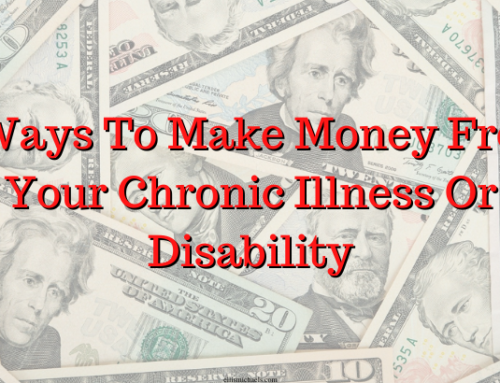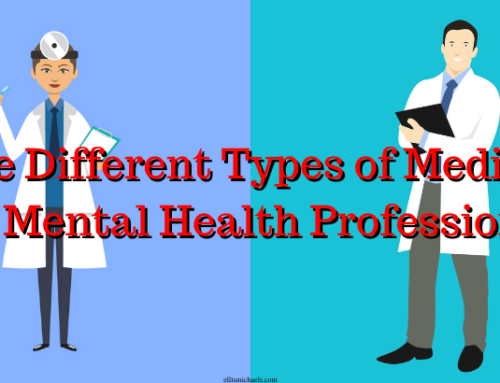Everyone should have access to top-of-the-line medical care whether they need it or not. For those of us living with a chronic illness, we know we need it. That’s why it’s especially important for us to understand the different types of health insurance.
In this article, we’re going to look at the different types of health insurance. But first, let’s see what health insurance is.
What Is Health Insurance?
Table of Contents
It’s a pain in the you-know-what: that’s what it is. Anyone who has ever had to deal with getting referrals, filing claims, or interacting with a health insurance company knows what I’m talking about. These companies multiply healthcare costs and make it hard for doctors to do their job. But health insurance isn’t going anywhere any time soon.
So what exactly is it? Health insurance is a type of insurance that covers some or all of the risk of a person taking on medical expenses. If an insured person gets sick or injured, their insurance company pays some or all of the costs of treatment. There are private health insurance companies and public government-run insurers.
Most people in the United States have health insurance. In 2018, 91.5% of Americans had some level of health insurance coverage.1 65.1% of people under the age of 65 have private insurance and 25.5% have public health insurance.2
 Private health insurance is frequently offered by full-time employers. 159-million Americans get health insurance through their job.3 But you can also get health insurance from a private company by paying for it yourself. Or, if you qualify, you can get public health insurance from either your state government or the federal government.
Private health insurance is frequently offered by full-time employers. 159-million Americans get health insurance through their job.3 But you can also get health insurance from a private company by paying for it yourself. Or, if you qualify, you can get public health insurance from either your state government or the federal government.
Health insurance is available in all 50 states. Some states offer their own coverage but most do not. The 13 states that do have their own healthcare plans are California, Colorado, Connecticut, District of Columbia, Idaho, Maryland, Massachusetts, Minnesota, Nevada, New York, Rhode Island, Vermont, and Washington.4 If you live in one of these states, check the state’s website for a link to their health insurance portal. If you don’t live in one of these states, you can enroll in a healthcare plan through the federal government at HealthCare.gov.
Different health insurance plans are organized by the level of benefits they offer. They are usually broken down into platinum, gold, silver, and bronze plans. Here is what each level offers:
 Platinum – you pay 10%, insurance covers 90%
Platinum – you pay 10%, insurance covers 90%- Gold – you pay 20%, insurance covers 80%
- Silver – you pay 30%, insurance covers 70%
- Bronze – you pay 40%, insurance covers 60%
Before we get to the different types of health insurance, let’s go over a few terms.
Heath Insurance Terms
Premium
This is what you (and/or your employer) pay for your health insurance. Most premiums are paid monthly, but sometimes they’re paid biweekly, quarterly, or once a year.
Deductible
This is how much you have to pay out-of-pocket before your benefits kick in. Let’s say you have a $1,000 deductible. That means, every year, you have to pay for the first $1,000 of medical bills you rack up. Then, everything after that is paid for by your insurance company.
Copayment (Copay)
 This is how much you have to pay for certain medical services. Copay amounts are often listed on the back of your health insurance card. Let’s say you have a $25 copay for mental health services. If you see a psychiatrist, you pay $25 out-of-pocket and your insurance company pays the rest (assuming you’ve already met your deductible).
This is how much you have to pay for certain medical services. Copay amounts are often listed on the back of your health insurance card. Let’s say you have a $25 copay for mental health services. If you see a psychiatrist, you pay $25 out-of-pocket and your insurance company pays the rest (assuming you’ve already met your deductible).
Coinsurance
A lot of plans make you pay what’s called coinsurance. Even after you’ve met your deductible, some plans make you still pay for a percentage of your healthcare costs. So, if you have a $100 office visit and your coinsurance is 20%, you’d pay $20.
Out-Of-Pocket Maximum
This is the most you’ll have to pay in a given year. Out-of-pocket maximums include your deductible, copay, and coinsurance (if applicable). Once you meet your out-of-pocket maximum, your health insurance should cover all of your medical expenses for the remainder of the year.
Now that we’ve gone over a few key terms, we can get to the different types of health insurance.
The Different Types of Health Insurance
Health Maintenance Organization (HMO)
These are the most-common type of health insurance plan. Health Maintenance Organizations, or HMOs, make up 19% of employer health plans and account for more than half of all healthcare marketplace plans.5 They generally have lower premiums than other types of plans, but also have a smaller network of doctors and hospitals.
 If you have an HMO, you need to designate a primary care physician (PCP). This is the doctor who coordinates your medical care. With an HMO, any time you need to see a specialist, you need to get a referral from your PCP. For those of us living with chronic medical conditions, this can be a real hassle since we often need to see a number of different specialists.
If you have an HMO, you need to designate a primary care physician (PCP). This is the doctor who coordinates your medical care. With an HMO, any time you need to see a specialist, you need to get a referral from your PCP. For those of us living with chronic medical conditions, this can be a real hassle since we often need to see a number of different specialists.
HMOs give you the least amount of freedom when it comes to choosing your healthcare providers. They only cover the costs of seeing providers in their network. However, HMOs are usually much cheaper than other types of plans and require a lot less paperwork.
With an HMO, you’ll have monthly premiums to pay as well as copays for any hospital and office visits that aren’t considered preventative. You’ll likely also have a deductible to meet before your full benefits kick in. But you won’t have to worry about filing claims and some of the other headaches that go along with some of the other plans.
Preferred Provider Organization (PPO)
This type of health insurance plan offers more freedom than an HMO. Preferred Provider Organizations, or PPOs, have larger networks of doctors to choose from. But that extra freedom comes at the cost of higher premiums.
 If you have a PPO, you don’t have to designate a primary care physician. You can see any specialist you’d like without having to get a referral. PPOs have larger provider networks than HMOs and you’re free to see doctors both in and out of network. However, out-of-network providers will cost more than in-network ones.
If you have a PPO, you don’t have to designate a primary care physician. You can see any specialist you’d like without having to get a referral. PPOs have larger provider networks than HMOs and you’re free to see doctors both in and out of network. However, out-of-network providers will cost more than in-network ones.
Even though you have more freedom and don’t need to get referrals to see specialists with a PPO, you still may need to get what’s called prior authorization for some services. A costly service like getting an MRI, for example, might require you to get your doctor’s approval first.
As long as you stay in network, there is no paperwork to worry about with a PPO. However, if you see an out-of-network provider, you’ll have to file a claim to get reimbursed.
While PPOs give you more freedom to choose your healthcare providers, they often have higher premiums and deductibles than HMOs. If you’re living with a chronic illness and need to see a lot of specialists, PPOs can be a good option. Personally, I prefer them to HMOs.
Exclusive Provider Organization (EPO)
This type of insurance plan has some similarities to both HMOs and PPOs. Exclusive Provider Organizations, or EPOs, are managed care plans with a network of providers you can see. Let’s see what EPOs do and do not have in common with HMOs and PPOs.
 Like HMOs, EPOs only offer a limited number of doctors and hospitals in their network. Unless it’s an emergency, you can’t get care from an out-of-network provider. However, EPOs offer a lot more freedom than HMOs – not quite as much as PPOs, but still more than you’d get from an HMO.
Like HMOs, EPOs only offer a limited number of doctors and hospitals in their network. Unless it’s an emergency, you can’t get care from an out-of-network provider. However, EPOs offer a lot more freedom than HMOs – not quite as much as PPOs, but still more than you’d get from an HMO.
Like PPOs, you don’t need to pick a primary care physician (PCP) with an EPO. You also don’t have to worry about getting referrals every time you need to see a specialist. However, you may need to get prior authorization from your doctor for certain expensive medical procedures just like you would with a PPO.
Since you don’t need referrals with an EPO, you don’t need to worry about having to fill out a lot of paperwork. And your premium will be lower than it would be with a PPO. As long as you stay in-network, an EPO can be a good choice for a lot of people. They offer a lot more freedom than HMOs and at a lower cost than PPOs.
Point Of Service (POS)
This is a type of health insurance plan that combines features of both HMOs and PPOs. Point of service, or POS, make up just 7% of health insurance plans.5 POS plans are a hybrid of PPOs and HMOs. With POS, you get to decide if you want to use your plan like an HMO or like a PPO each time you see a provider.
 Like with an HMO, you have to pick a primary care physician with a POS plan. You’ll get referrals from your PCP to see specialists that are in your network. However, unlike with an HMO, you are allowed to see out-of-network providers just like with a PPO.
Like with an HMO, you have to pick a primary care physician with a POS plan. You’ll get referrals from your PCP to see specialists that are in your network. However, unlike with an HMO, you are allowed to see out-of-network providers just like with a PPO.
But if you see an out-of-network provider, you have to file a claim with your POS insurer to get reimbursed, just like you would with a PPO. So there is some paperwork involved with POS plans if you go to out-of-network providers.
POSs can be a good choice for someone who wants more freedom than an HMO offers but doesn’t want to pay the high premiums of having a PPO.
High-Deductible Health Plan (HDHP)
This is the last type of health insurance plan we’re going to discuss. High-deductible health plans, or HDHPs, are insurance plans that have higher deductibles and lower premiums than other health plans. Sometimes they’re also referred to as consumer-driven health plans (CDHPs). 30% of workers have a HDHP and 41% of people with marketplace plans have one.5
 Unlike other plans, there is a lot of variation from one HDHP plan to the next. One might look a lot like an HMO. Another might be more like a PPO. But what separates HDHPs from all the other plans is the size of the deductible. HDHPs have higher deductibles and out-of-pocket maximums than any of the other insurance plans.
Unlike other plans, there is a lot of variation from one HDHP plan to the next. One might look a lot like an HMO. Another might be more like a PPO. But what separates HDHPs from all the other plans is the size of the deductible. HDHPs have higher deductibles and out-of-pocket maximums than any of the other insurance plans.
For those of us living with rare and chronic medical conditions, HDHPs probably aren’t a good choice. This type of plan is designed for people who are in good health and generally only go to the doctor for routine checkups and procedures. HDHPs are considered catastrophic coverage.
Catastrophic health plans are meant for people who are generally healthy and only need to go to the doctor for preventative care. These plans only cover preventative office visits and catastrophic illnesses like strokes, heart attacks, and cancer. And they’re only available to people who are under the age of 30.6 So again, HDHPs are not a good choice for people with chronic illnesses.
Conclusion
And there you have the different types of health insurance plans. As far as I can recall, I’ve always had either an HMO or a PPO. Right now, I have an HMO. But I greatly prefer PPOs. They offer the greatest amount of freedom to see the doctors you want to see, where you want to see them. But HMOs have a lot of advantages, too.
What type of health insurance do you have? Do you like it? Please leave your answers in the comments section at the bottom.
Join the Ellis Michaels mailing list to stay up to date with the latest news about chronic illnesses, recent articles and other publications, and more.
References
1Health insurance coverage in the United States: 2018. (2019, Nov. 8). United States Census Bureau. Retrieved September 1, 2020 from https://www.census.gov/library/publications/2019/demo/p60-267.html
2Health insurance coverage. (2020, Apr. 14). Centers for Disease Control and Prevention. Retrieved September 1, 2020 from https://www.cdc.gov/nchs/fastats/health-insurance.htm
3Federal subsidies for health insurance coverage for people under age 65: 2019 to 2029. (2019, May 2). Congressional Budget Office. Retrieved September 1, 2020 from https://www.cbo.gov/publication/55085
4The marketplace in your state. (n.d.). HealthCare.gov. Retrieved September 1, 2020 from https://www.healthcare.gov/marketplace-in-your-state/
5Masterson, L. (2020, Feb. 27). What is the difference between HMO, PPO, HDHP, POS, EPO? Insurance.com. Retrieved September 1, 2020 from https://www.insurance.com/health-insurance/difference-between-ppo-hmo-hdhp-pos-epo.html
6Catastrophic health plans. (n.d.). HealthCare.gov. Retrieved September 2, 2020 from https://www.healthcare.gov/choose-a-plan/catastrophic-health-plans/







Leave a Reply